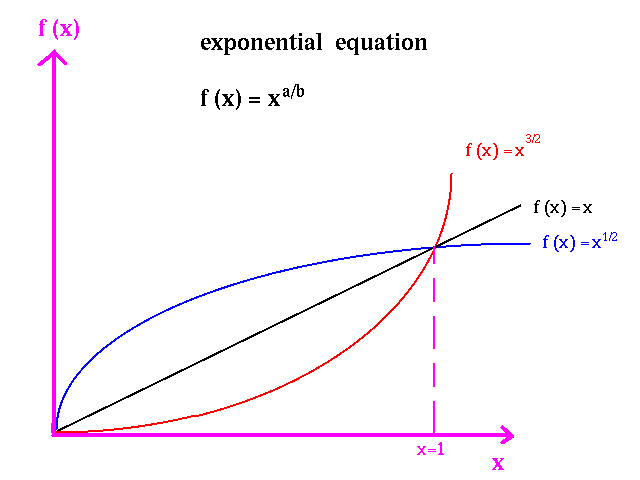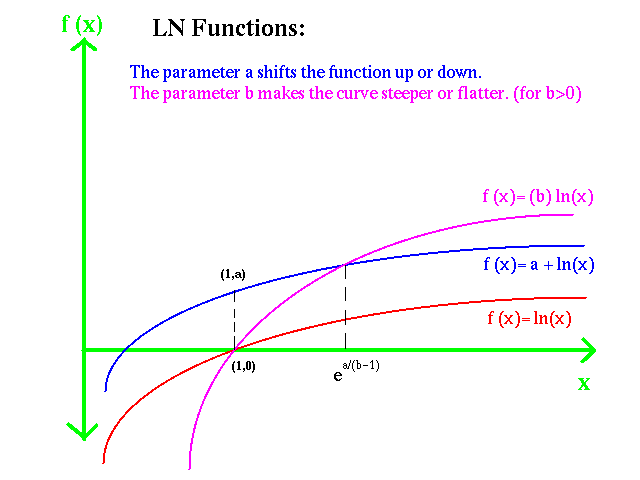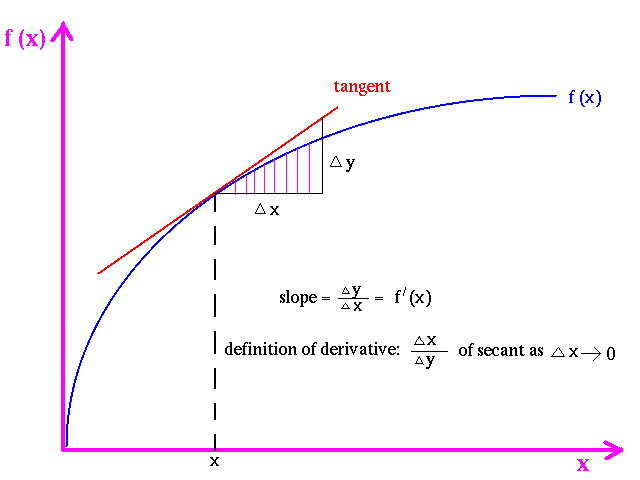Math for Microeconomics
Introduction
In this section we shall present the basic math tool to solve one variable optimization problems. In this course math is a tool to solve economics problems.
Derivative
Function : For any element , is an element in the range of corresponding to element in the domain. A function can be represented as a graph for all in the domain of .
The most common functions used in Economics are linear functions, functions to fractional exponents, and ln functions.
Linear:
Fractional exponent:
Ln



Derivative : The derivative of at , denoted as or is defined as:
The type of functions we will consider in this course will be differentiable at almost all points in their domains.
It is important to note that the derivative has a geometric interpretation. The derivative is the slope of the tangent line to at .

In taking derivatives we could go back to first principles and use the definition to derive them. It is much easier to use the rules derived from the definitions.
Derivative Rules
Examples:
There are three rules involving functions of functions which we will use repeatedly in the course.
1 Product Rule: Given functions and with :
2.Quotient Rule: Given functions and with :
3.Composite Function Rule: Given functions and with What this means is that for a given is the input for :
We could also write it as:
.
Examples:
_
_
_____
_____
_
_
_____
_____
_
_____
_
_____
_
_
_____
_____
__
_ f'(x) = v (3w22x) + u(2z3x2)
_____
 Previous
Previous
 Index
Index
 Next
Next






